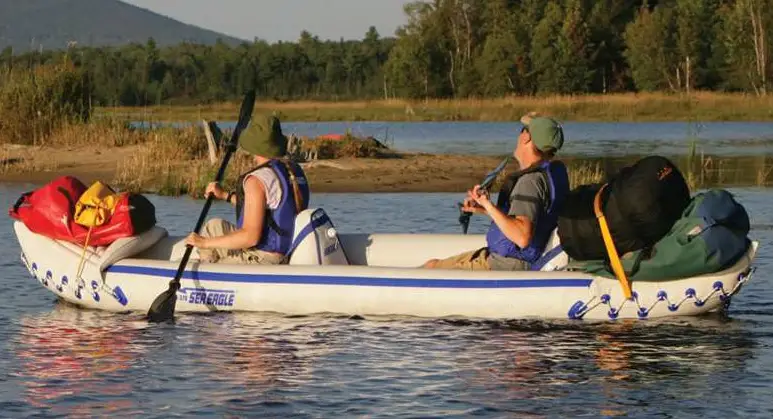Kayaking is an amazing way to get outside.
Here are a few beginner kayak tips to make your first paddle a breeze.
It’s a good idea to head out with experienced friends or a qualified instructor.
We’re going to talk about the gear you’ll need for your first time out, making some basic fit adjustments to the kayak, some tips for getting in your kayak and a bit of basic paddling technique.
Table of Contents
Gear
Other than your kayak and paddle, there are a few key things to bring along.
A well fitting PFD is a must-have and make sure you attach a whistle too.
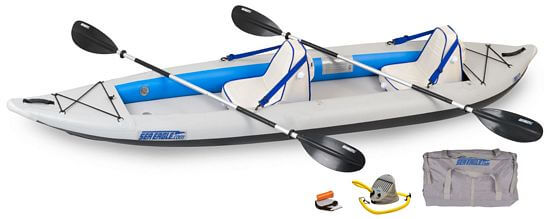
Clothes
Dress for the water temperature, not the air temperature. Quick-drying non-cotton layers are your best options. A paddle jacket is a good idea on cooler water.
Shoes
Neoprene wet shoes are the ideal choice, but sandals to protect your toes and the bottom of your feet also work.
Sunscreen
Of course sunscreen is a must and a hat and sunglasses with a keeper are also a good idea.
Seat
Adjusting your kayak seat is the first step. Most seats have straps you can tighten or loosen to get the backrest where you want it.
For comfort and paddling efficiency make sure you’re sitting upright.
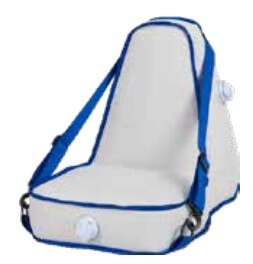
Foot Pedals
Next adjust the foot pedals.
On a sit on top kayak, you’ll position them so you have a comfortable bend in your knee. If your sit inside kayak has thigh braces, adjust the pedals until your thighs are resting in the braces.
If you don’t have braces, make sure your legs are resting against either side of the cockpit.
Launching
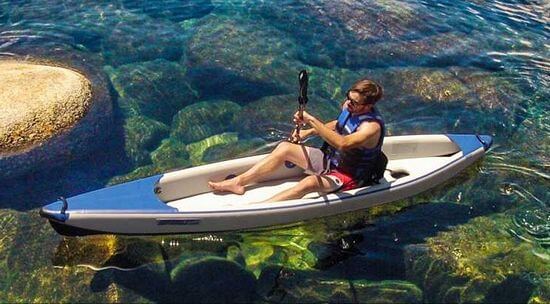
Once you’ve got the boat adjusted to fit, it’s time to hit the water.
Set the kayak down at the water’s edge with the seat over the water and the stern resting on the beach.
Stand over the cockpit hold on to the kayak and sit down.
You can use your paddle for stability as you bring your feet into the boat.
Now just push off and start paddling.
Paddling Techniques
Good technique is important.
First make sure the scooped part of the blade is facing you with the long edge on top.
To get the right distance between your hands, rest the paddle shaft on your head. Your elbows should almost make right angles.
Best Inflatable Kayaks For Sale
Forward Stroke
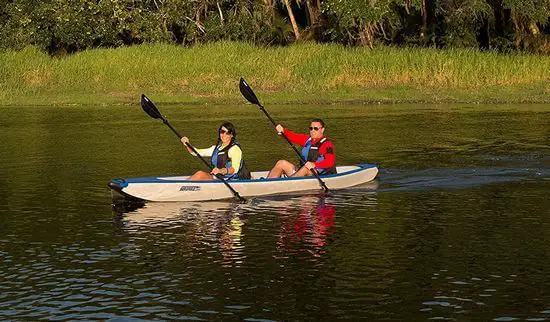
When you’re paddling, the key is to get the power from your torso not your arms.
To start, turn so one side of your body is pointing toward the front of the kayak.
Now reach forward and plant the blade in the water, twist your torso and push one hand forward, while you pull back with your other hand.
Pull the blade out of the water when your hand gets to your hip and you’re ready to repeat on the other side.
Reverse Stroke
If you want to stop just do the same thing in reverse.
Plant the blade behind you and draw it forward until it reaches your foot.
Sweep Stroke
To turn, reach as far forward as you can, plant the blade and make a wide arc all the way to the back of the kayak.
How to Self-Rescue
If you’re alone and find yourself swimming, you’ll have to perform a self-rescue to get back in your kayak.
Here’s the breakdown,
Set up your paddle float, flip the kayak, use your paddle as an outrigger, pull yourself onto the kayak and slide into the cockpit.
Simple right?
Let’s take a closer look at those steps.
As soon as you’re back above the water, get a hold of your paddle and your kayak and grab your paddle float.
Hook your leg inside the cockpit to free up your hands.
Slide the blade into the float and make sure to attach the clips to secure it to the paddle.
Now it’s time to get the kayak upright.
Reach under the boat and grab the cockpit coaming on the far side. Pull it toward you while you push up on the near side of the kayak.
Now move to the stern and lay your paddle behind the cockpit with the blade just on the far side of the coaming.
Hold the paddle and the coaming in one hand to keep it in place and reach across the deck to find something to hold on to.
Give a big kick or climb onto your paddle so you can pull yourself on to the rear deck.
Keep your weight low and stay on your belly while you spin around to slide your legs into the cockpit.
Remember to lean onto the paddle for stability.
Once your legs are in, twist around so you’re sitting in the kayak.
Now that you’re back in, stow your paddle so you can pump the water out of your boat and put your skirt back on.
You’ll want to practice your self rescue technique so it’s ready when you need it.
It’s a good idea to have a friend on hand to help you out.
How to Transport a Kayak
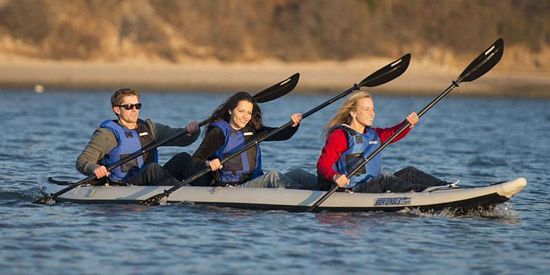
Getting your kayak from A to B isn’t complicated, but it’s worth taking the time to do it right.
Whatever rack system you’re using, these tips will still be helpful. We’re going to be using simple foam blocks.
Let’s talk about getting your kayak onto your car, the best way to tie it down and a couple ways to carry your boat to the water.
Once you’ve got your rack prepared, grab a friend and lift your kayak into place. Make sure the boat is centered over the rack and on the pads.
If you’re going solo, lift the bow of the kayak onto the back of the car, then lift the kayak from the stern and slide it into place.
Hold your cam buckle and throw the end of the strap over your kayak.
Wrap the straps around your kayak and the rack. Give the strap a little twist before you thread it into the buckle to keep it from humming in the wind.
Once you’ve got both straps tight check the kayak to make sure it won’t move around. Now you can secure the bow and the stern.
Tie it to the end of the boat and run it to a tie-down point near your bumper. You can use specialized bow and stern straps to make it easy. But some cord and a trucker’s hitch will also get the job done.
Tying down both ends keeps the kayak more secure, especially in high winds or on the freeway.
Bringing a partner will make getting your boat to the water a breeze.
If you’re alone grab the far side of the cockpit and get the kayak up to your knee. Now just launch your shoulder inside and head to the shore.
What Do I Need to Know About Buying a Kayak?
What is Better: Canoe or Kayak?
